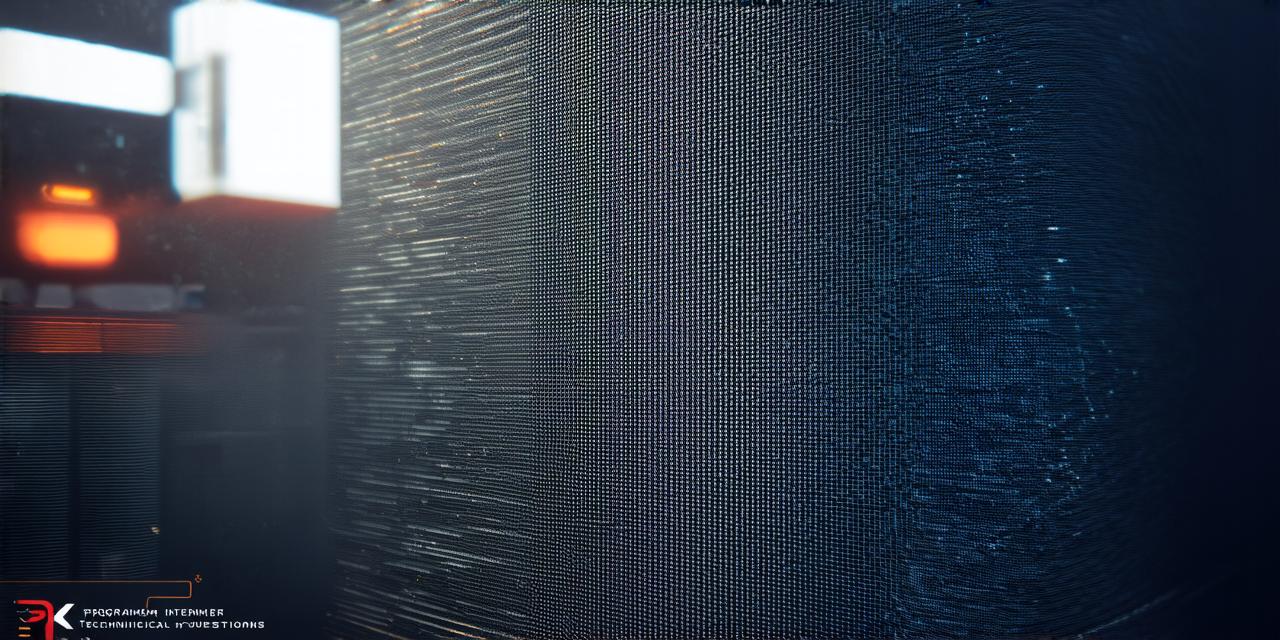Essential 3D Programmer Interview Questions
Welcome to the ultimate guide for game developers looking to ace their 3D programmer interviews. As a 3D programmer, you are responsible for creating realistic and interactive environments in video games. With the increasing demand for skilled 3D programmers, it’s important to be prepared for the interview process.
What is a 3D Programmer?
Before diving into the interview questions, let’s first understand what it means to be a 3D programmer. A 3D programmer is responsible for creating 3D models, animations, and environments in video games. They use specialized software such as Maya, Blender, and Unity to create 3D assets that are then integrated into the game engine.
A 3D programmer’s work includes:
- Modeling 3D objects
- Animating 3D characters
- Creating textures and materials for 3D assets
- Building and testing 3D environments
- Optimizing 3D models for performance
- Debugging and troubleshooting 3D issues
Essential 3D Programmer Interview Questions
Now that we have a better understanding of what a 3D programmer does let’s dive into the essential interview questions.

1. What motivated you to become a 3D programmer?
This question allows you to showcase your passion for creating 3D assets and environments. Share with the interviewer what inspired you to get started in this field and how it has evolved over time.
2. What software are you proficient in?
This question is essential as it shows the interviewer your technical skills and expertise with different software tools. Be sure to mention the specific version of each software tool that you are proficient in.
3. What is your experience with version control systems?
Version control systems such as Git are essential in software development as they allow for collaboration and tracking changes to code. This question tests your understanding of version control and how it works in a team environment.
4. How do you optimize 3D models for performance?
This question tests your understanding of how to create efficient 3D assets that can run smoothly on various hardware configurations. Be sure to explain the different techniques you use to optimize 3D models, such as reducing polygon count and using LOD (Level of Detail) textures.
5. How do you approach debugging and troubleshooting 3D issues?
This question tests your problem-solving skills and ability to identify and fix issues with 3D assets. Be sure to explain the different techniques you use to debug and troubleshoot 3D issues, such as profiling and logging.
Preparing for Your Interview
Now that we have covered the essential interview questions let’s discuss how to prepare for your interview.
1. Review job requirements and company culture
Before your interview, review the job requirements and company culture to get a better understanding of what is expected from you as a candidate. This will help you tailor your responses to align with the position requirements and demonstrate that you are a good fit for the company.
2. Practice answering common interview questions
While it’s important to be authentic in your responses, practicing answering common interview questions can help you feel more prepared and confident during the interview process. Be sure to practice answering technical as well as behavioral-based questions.
3. Bring a portfolio of your work
Your portfolio is a tangible representation of your skills and experience. Bringing a portfolio of your work to the interview allows the interviewer to see firsthand what you are capable of creating. Be sure to include examples of your best work, along with any relevant project details such as tools used and challenges faced.
4. Dress professionally
Dressing professionally shows that you take the interview process seriously and respect the company’s expectations. While it may not be necessary for a remote interview, dressing professionally can help set the tone for the interview and make you feel more confident.
5. Be on time
Being on time demonstrates professionalism and respect for the interviewer’s time. If you are late to the interview, let the interviewer know as soon as possible and offer a valid reason for your tardiness.
Summary
In conclusion, preparing for a 3D programmer interview requires careful preparation and practice. By reviewing job requirements and company culture, practicing answering common interview questions, bringing a portfolio of your work, dressing professionally, and being on time, you can ace your interview and secure your dream job as a 3D programmer.
Remember that every interview is unique, and the
